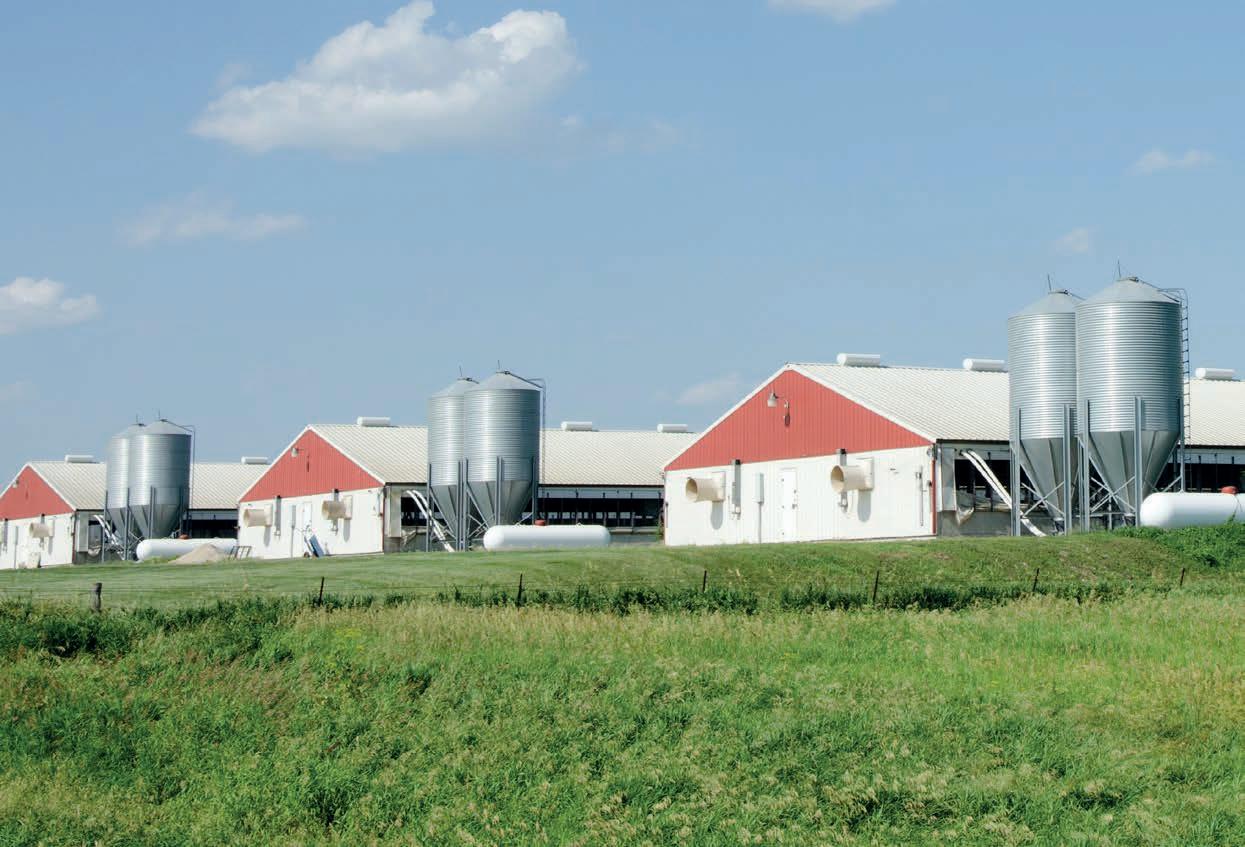
4 minute read
Mastering the Water Line – Height & Pressure
Birds require ample water supply in order to digest their food. Let’s see how to monitor and adjust properly height and pressure to have birds better than ever.
Before we get started on why drinker line height and pressure are so important, there are a few facts you need to know: 1. Chickens consume 1.75 pounds of water for every pound of feed. This is a constant.
2. Chickens have a maximum rate at which they can consume water, and this rate changes with age. To determine what this rate is, use this equation: [(Bird Age in weeks) x 7] + 20 = Flow Rate.
3. Chickens can’t swallow. There is a split in their hard palate so they cannot create the vacuum to swallow, so they just tilt their heads back and let the water slide down their throat.
Why is the drinker line height so important?
Because water is the most important nutrient. Birds require ample water supply in order to digest their food. If the line is too low, most of the water ends up in the litter, not in the birds. If the line is too high, birds can only peck at the trigger instead of activating it properly, so they don’t consume enough water. All of this results in poor weight, performance, and increases the opportunity for disease.
Only about one-third of the water pumped into a chicken house comes out in bird weight; the other two-thirds is either ventilated out or stuck in the litter. We can’t make water less available, we just have to manage it differently. This is done in two parts:
• First, it’s imperative that the nipples aren’t leaky. Drinker lines should be cleaned and flushed regularly, at least once a week. Nipple drinkers have a lifespan of 5-10 years, depending on water quality. Replace your old drinkers when you notice that no amount of cleaning is fixing the leaky nipple problem.
• Second, the drinker line height needs to be examined and adjusted almost daily. Today’s broilers grow exceptionally fast, and you can’t afford to get behind with proper watering. The easiest way to determine if the height is suitable is to watch the birds. If they must sit to drink, it is too low. If they must stretch their necks straight up, stand on their
toes, or hop, the line is too high. Here are some age guidelines to help you make appropriate adjustments:
• Day-old chicks – drinkers should be just above eye level. Remember to have the barn lit well enough that the chicks are drawn to the shiny metal pin, so that they learn to drink from the nipples.
• 2 – 3 days – raise the lines so chicks drink at a 30- 45° angle.
• 4 – 10 days – raise lines so birds are reaching at a 60° angle.
• 10 days through grow out – check frequently that birds are reaching at a 70-80° angle towards the bottom of the trigger pin.
But what about water pressure?
Chickens have a maximum rate at which they can consume water, and this rate changes with age.
Some simple math can determine what that rate is:[(Bird age in weeks) x 7] + 20 = Flow Rate (mL/s)
This equation creates a target sweet spot for producers where the drinker flow rate matches the beak capacity of the bird. Drinker flow rates are important to note, but the water pressure in the drinker line influences the flow rate.
Too much water pressure results in wasted water because too much water comes out when the nipple is triggered. It can also result in leaky nipples because it will inhibit the shut off mechanism from sealing properly. Too little pressure doesn’t allow the birds to drink enough, resulting in decreased performance.
As a general guideline, you should provide at least 25 psi (pounds per square inch) of pressure to the system and then adjust the regulator so that the ball height is 2-4” (5- 10cm). After the second week, water pressure should be as high as possible without wetting the litter.

The float ball in the standpipe is used to see how much pressure is in your water line
• Day 3: raise to 3-4”
• Day 5: raise to 5-6”
Continue to raise the water pressure 1-2” every other day until you notice litter conditions getting wet. Stop adjusting the pressure until the litter conditions improve (litter should be just damp enough that it clumps and then crumbles when squeezed into a ball). Once conditions have returned to normal, continue increasing the pressure 1-2” every other day until 28” is reached.
Increase the life span of the regulator by turning the pressure back to 2-4” immediately after removing the birds from the house.
If both of these things are monitored and adjusted properly, your birds will be better than ever!
For more information, contact VAL-CO, your watering specialists! Visit www.val-co.com or send an email to marcom@val-co.com.










